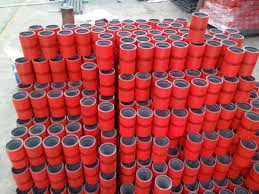- Afrikaans
- Albanian
- Amharic
- Arabic
- Armenian
- Azerbaijani
- Basque
- Belarusian
- Bengali
- Bosnian
- Bulgarian
- Catalan
- Cebuano
- Corsican
- Croatian
- Czech
- Danish
- Dutch
- English
- Esperanto
- Estonian
- Finnish
- French
- Frisian
- Galician
- Georgian
- German
- Greek
- Gujarati
- Haitian Creole
- hausa
- hawaiian
- Hebrew
- Hindi
- Miao
- Hungarian
- Icelandic
- igbo
- Indonesian
- irish
- Italian
- Japanese
- Javanese
- Kannada
- kazakh
- Khmer
- Rwandese
- Korean
- Kurdish
- Kyrgyz
- Lao
- Latin
- Latvian
- Lithuanian
- Luxembourgish
- Macedonian
- Malgashi
- Malay
- Malayalam
- Maltese
- Maori
- Marathi
- Mongolian
- Myanmar
- Nepali
- Norwegian
- Norwegian
- Occitan
- Pashto
- Persian
- Polish
- Portuguese
- Punjabi
- Romanian
- Russian
- Samoan
- Scottish Gaelic
- Serbian
- Sesotho
- Shona
- Sindhi
- Sinhala
- Slovak
- Slovenian
- Somali
- Spanish
- Sundanese
- Swahili
- Swedish
- Tagalog
- Tajik
- Tamil
- Tatar
- Telugu
- Thai
- Turkish
- Turkmen
- Ukrainian
- Urdu
- Uighur
- Uzbek
- Vietnamese
- Welsh
- Bantu
- Yiddish
- Yoruba
- Zulu
seamless tubing coupling
Seamless Tubing Coupling An Essential Component in Modern Engineering
Seamless tubing coupling is an integral element in various industries, notably in the oil and gas, chemical processing, and construction sectors. Its primary function is to connect different sections of piping systems without the need for welds or other joining methods, ensuring a continuous flow of fluids or gases. This article delves into the significance of seamless tubing couplings, their benefits, manufacturing processes, and applications.
One of the key advantages of seamless tubing couplings is their structural integrity. Unlike welded joints, which can be susceptible to cracking or corrosion due to the stresses of thermal expansion, seamless couplings provide a uniform distribution of stress along the tubing length. This characteristic is vital in high-pressure environments, where even the smallest defect can lead to catastrophic failures. Seamless couplings are often made from high-strength materials, such as stainless steel or alloy steel, which enhance their durability and resistance to harsh conditions.
The manufacturing process of seamless tubing typically involves a series of steps that begin with the selection of high-quality raw materials. These materials are heated and then pierced to form a hollow tube. This method eliminates the presence of seams, which are often vulnerable points in cylindrical components. The resulting tubing is then subjected to further processes such as elongation, resizing, and heat treatment to achieve the desired dimensions and mechanical properties.
seamless tubing coupling

Another significant benefit of seamless tubing couplings is their versatility. They can be manufactured in various sizes and specifications to suit a wide range of applications. Industries that require precise control over substance flow, such as pharmaceuticals and food processing, often prefer seamless couplings to minimize the risk of contamination. Additionally, seamless couplings can be used in extreme temperatures and pressures, making them suitable for demanding environments like deep-sea drilling or high-pressure gas transport.
In terms of installation and maintenance, seamless tubing couplings offer significant advantages. As they do not require welding, the installation process is generally simpler and quicker. This can result in reduced labor costs and faster project completion times. Furthermore, seamless couplings typically have a longer service life compared to welded alternatives, leading to lower maintenance and replacement costs over time.
Seamless tubing couplings are widely used across various applications. In the oil and gas industry, they are essential for connecting pipelines that transport crude oil and natural gas from production sites to refineries. In the chemical processing sector, seamless couplings are used in reactors and transport lines where the containment of hazardous materials is crucial. Additionally, in healthcare, seamless tubing is vital for the safe transport of fluids in medical instruments and devices.
In conclusion, seamless tubing couplings play a critical role in ensuring the efficiency and safety of piping systems in numerous industries. Their inherent advantages, including structural integrity, ease of installation, and versatility, make them an indispensable choice for engineers and project managers. As industries continue to evolve and adopt new technologies, the demand for high-quality seamless tubing couplings is expected to grow, driving innovation and advancement in manufacturing processes.
-
Tubing Pup Joints: Essential Components for Oil and Gas OperationsNewsJul.10,2025
-
Pup Joints: Essential Components for Reliable Drilling OperationsNewsJul.10,2025
-
Pipe Couplings: Connecting Your World EfficientlyNewsJul.10,2025
-
Mastering Oilfield Operations with Quality Tubing and CasingNewsJul.10,2025
-
High-Quality Casing Couplings for Every NeedNewsJul.10,2025
-
Boost Your Drilling Efficiency with Premium Crossover Tools & Seating NipplesNewsJul.10,2025







